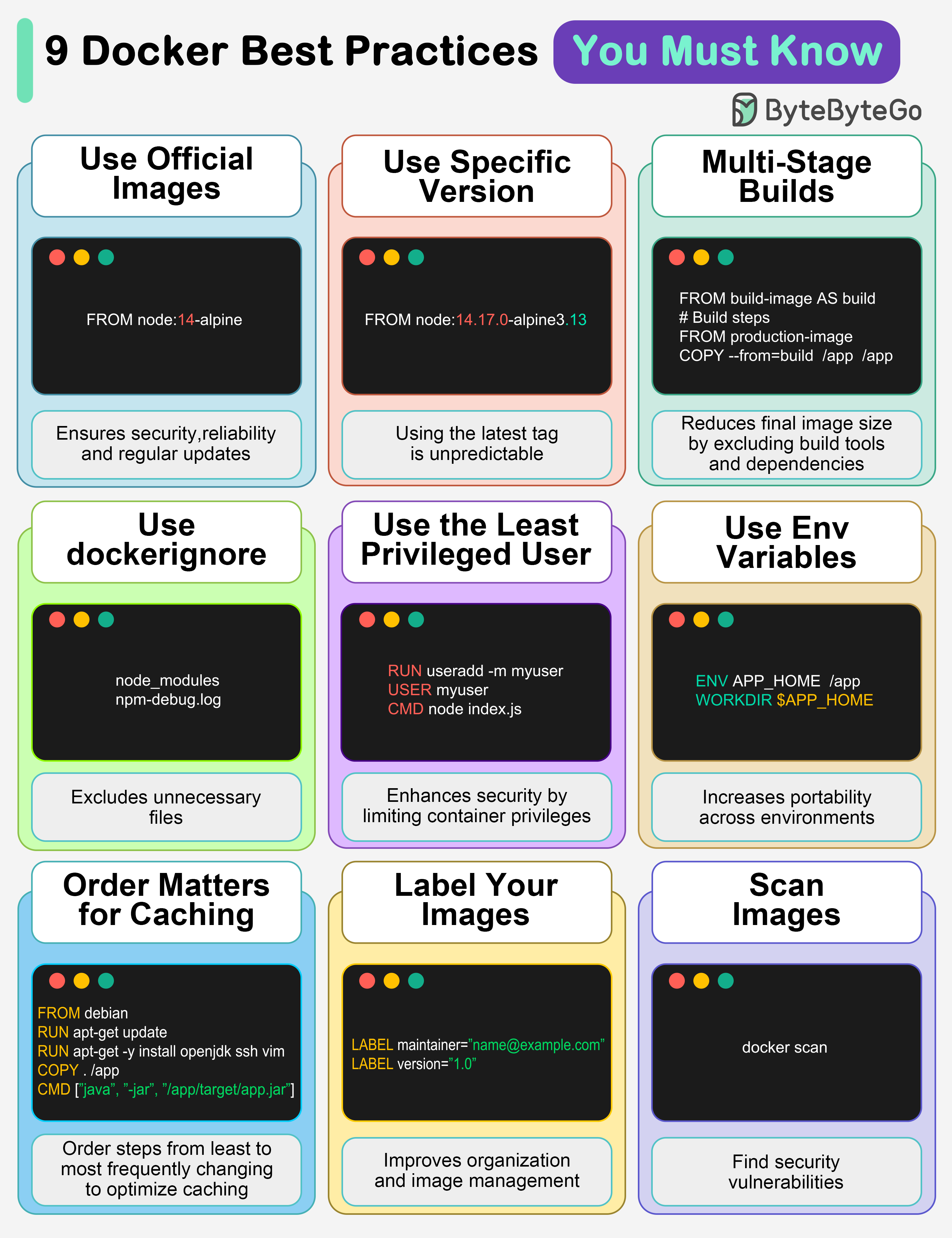Learn 9 essential Docker best practices for efficient containerization.

This ensures security, reliability, and regular updates.
The default latest tag is unpredictable and causes unexpected behavior.
Reduces final image size by excluding build tools and dependencies.
Excludes unnecessary files, speeds up builds, and reduces image size.
Enhances security by limiting container privileges.
Increases flexibility and portability across different environments.
Order your steps from least to most frequently changing to optimize caching.
It improves organization and helps with image management.
Find security vulnerabilities before they become bigger problems.
Over to you: Which other Docker best practices will you add to the list?